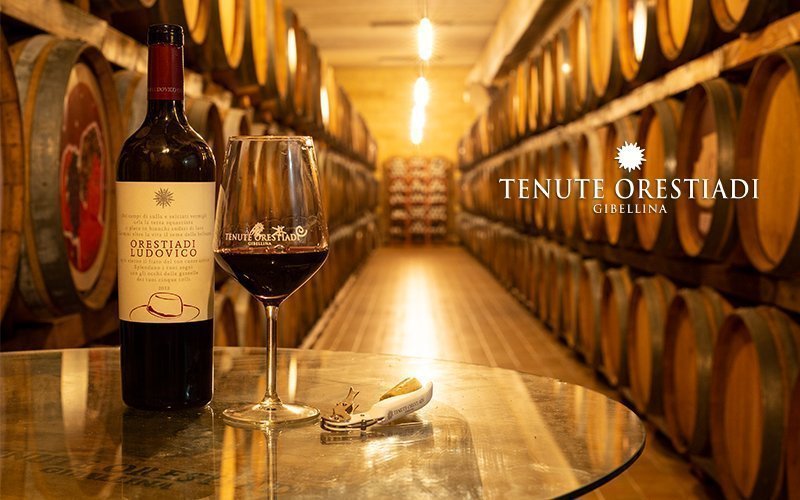
The wine at Orestiadi Cellars does not taste of cork, but of art and territory.
I am Francesco, CEO of Sicily Rent Car and I have always been passionate about travelling by car. When I created my company I felt that the time had come to rediscover my land and share its beauty.
In this article I tell you about the scents that you can breathe at Orestiadi Cellars, the works of art that will amaze you inside Baglio di Stefano and the wines that have a different flavor depending on the color of the land.
Orestiadi Cellars, Gibellina

Inside the Orestiadi Cellars you will feel the air of rebirth.
You can breathe that energy that transformed the town after the earthquake of 1968 and saw it start again, with the strength of a phoenix, starting from the Cretto di Burri.
Even the Estates, born in 2008 from the union of the Orestiadi Foundation and the Ermes cellars, have the desire to revive Sicilian culture and traditions through wine.
In 2018 they meet La Gelsomina, a winery of Etnean excellence that shares the same love for the territory and with which a collaboration was born
Art and Wine

What else could we expect from the Orestiadi Estates then? Gibellina vecchia is practically an open-air museum and it is in this atmosphere that the vineyards have their roots.
Even the Baglio di Stefano was rebuilt after the earthquake and you will be amazed inside, finding yourself breathing art and must.
In the Barriques Museum I was able to chat with Annapaola, who told me about how the collaboration with the Academy of Fine Arts of Brera was born and their choice to combine the wine culture with the artistic-visual one.
It was an interesting experience to taste a glass of wine while admiring the decorated and applied to the barriques (the wine barrels, hence the name of the barrique cellar).
Belìce Valley: shades of land and wines
I let myself be transported around Sicily by Annapaola story, which explained to me the characteristics of the land and the birth of the wines of the winery. Red, white and black soil meet in the Belìce valley, to create a wine suitable for every palate and with a jump of 200 km I came to feel the lava soil in my hands, in the particular taste of Ethnic wines.
Red soil:
A soil full of ferrous micro elements, rich in sand and skeleton (stones). Perricone was born in this land: its second name is in fact Pignatello, just in relation to the “pignatate”, which in Sicilian means pots made with the same red soil.
Black soil:
A soil rich in silty-clayey substances, compact and resistant to drought. The soil is perfect for both white and red berries and it is here that the flagship of the winery, the Orestiadi Ludovico, is born. The wine is dedicated to Ludovico Corrao, president of the foundation and former mayor of the city of Gibellina. It will be his story that influenced me, but Ludovico is the wine that I also appreciated the most.
White soil:
A soil of medium compactness and with a very high component of limestone and chalk. This soil is ideal for the cultivation of native whites such as Grillo, Zibibbo, Inzolia, Catarratto and Grecanico.
Lavic soil:
The soil of Etna is both lava and clayey, the “gghiara” as pronounced by the ethneians. Here are born the native wines of the volcano, such as Nerello Mascalese, Nerello Cappuccio, Carricante and Moscato dell’Etna.
I know what you’re thinking…
“But how did he remember all these details?”
Don’t worry, I actually just did a quick review here before I tell you about my day!
Did you like this article? Make a quote for your next car rental here or discover the other destinations our travelers have been passionate about here.
- Car used: CITROËN C3
- Consumption: 35€ for the journey
- Km traveled: 198 (trip from Palermo)
- Distance from nearby airports: 70 kilometers from Palermo Airport

